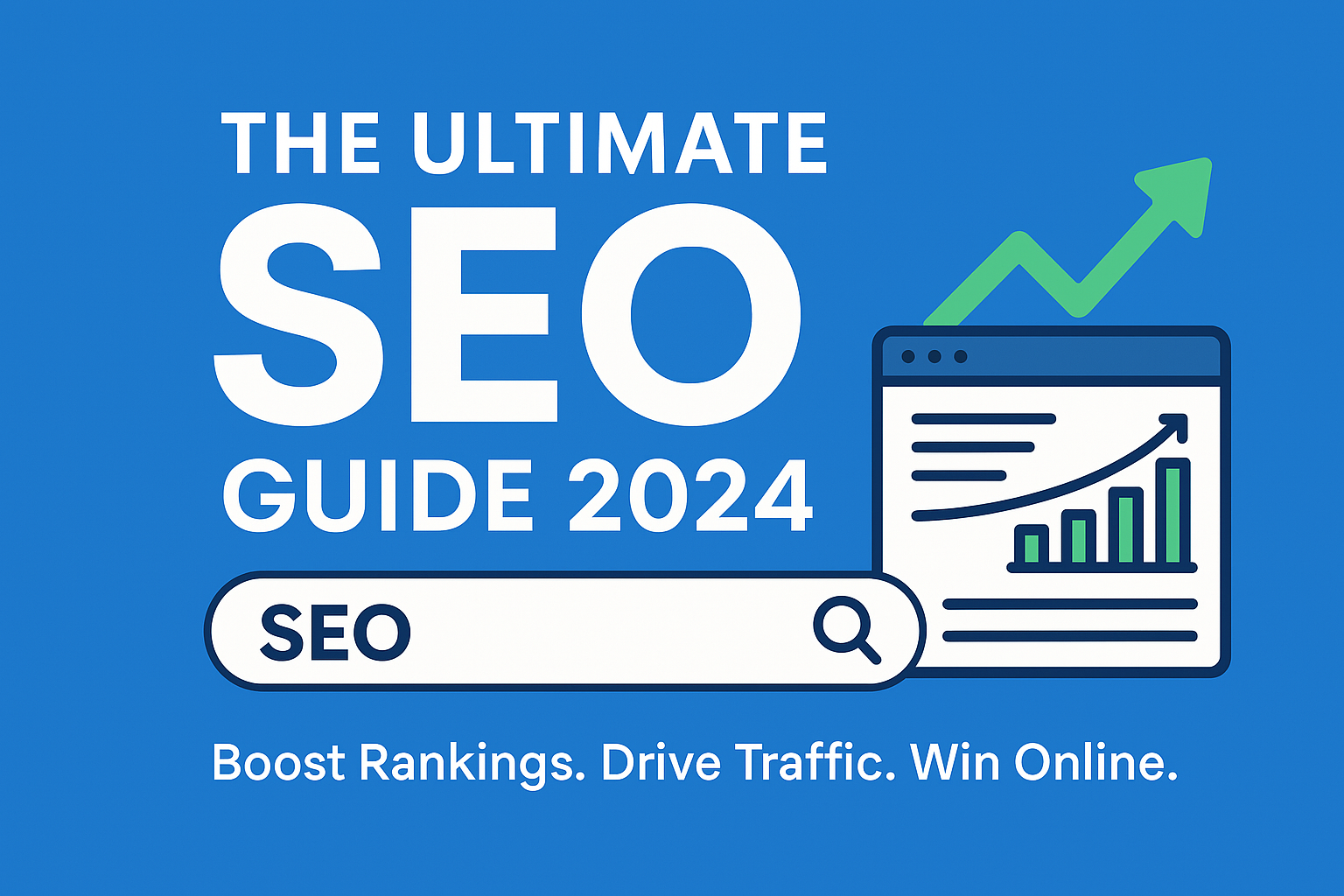The Ultimate Guide to SEO: Everything You Need to Know to Boost Your Online Visibility
15 April 2025

In today’s digital-first world, simply having a website isn’t enough. If your target audience can’t find you on search engines like Google, you’re missing out on massive potential traffic and sales. That’s where SEO (Search Engine Optimization) comes in. SEO is not just a buzzword; it's a crucial marketing strategy that helps your website rank higher in search engine results, bringing organic (unpaid) traffic to your site.
In this comprehensive guide, we’ll dive deep into what SEO is, why it matters, and how you can use it to skyrocket your website’s visibility and performance.
SEO stands for Search Engine Optimization. It refers to the process of optimizing your website and content to increase its visibility in search engine results pages (SERPs).
When users type queries into search engines like Google, Bing, or Yahoo, they’re shown a list of pages that match their search. SEO helps ensure that your website appears at the top of that list.
Organic Traffic = Free Traffic: SEO helps you attract visitors without paying for ads.
Credibility & Trust: Higher rankings often equate to higher trust in the minds of users.
Better User Experience: Good SEO improves site structure, speed, and content quality.
Competitive Advantage: Ranking above your competitors can mean more leads and sales.
On-Page SEO
Refers to optimizing elements on your website.
Includes:
Keyword optimization
Title tags & meta descriptions
Header tags (H1, H2, H3…)
URL structure
Internal linking
Content quality
Off-Page SEO
Focuses on external factors that influence your ranking.
Includes:
Backlink building
Social sharing
Influencer outreach
Guest blogging
Technical SEO
Improves the backend structure of your site.
Includes:
Website speed
Mobile-friendliness
Secure connections (HTTPS)
Structured data (schema markup)
XML sitemaps & robots.txt
Local SEO
Targets location-based searches (great for businesses with physical locations).
Includes:
Google My Business optimization
Local keywords
Customer reviews
Local citations
To understand SEO, it’s important to understand how search engines work:
Crawling: Search engines use bots (spiders) to discover new and updated content on the web.
Indexing: After content is found, it’s stored in a massive database called an index.
Ranking: When a user searches, the search engine pulls relevant results from the index and ranks them based on hundreds of ranking factors.
Quality & relevance of content
Keyword usage and placement
Mobile responsiveness
Page speed
Secure HTTPS connection
User experience signals (like bounce rate, dwell time)
Backlinks (quality and quantity)
Domain authority
Schema markup
Social signals (indirect influence)
Use tools like Google Keyword Planner, Ubersuggest, or SEMrush.
Find keywords with a balance of search volume and low competition.
Focus on long-tail keywords for more targeted traffic.
Aim to solve problems or answer questions your audience is asking.
Use keywords naturally — don’t keyword stuff.
Include images, videos, and infographics to enhance engagement.
Use your target keyword in the title, meta description, and headings.
Ensure URLs are clean and include keywords.
Add alt text to images for accessibility and SEO.
Reach out to industry websites for guest posting.
Create shareable content that naturally attracts links.
Use social media and forums to promote your content.
Use tools like Google PageSpeed Insights to improve load times.
Ensure your site is mobile-friendly.
Submit an XML sitemap to Google Search Console.
Use Google Analytics and Google Search Console.
Track keyword rankings with tools like Ahrefs or Moz.
Adjust strategies based on performance data.
Ignoring mobile optimization
Not using analytics tools
Overusing keywords
Buying low-quality backlinks
Publishing duplicate or thin content
Not updating old content
SEO is a long-term strategy. You may start seeing results in 3–6 months, depending on:
Your website’s age and authority
The competition in your niche
Your SEO efforts and consistency
But once you gain traction, the results are sustainable and often compound over time.
SEO is more than just a marketing tactic — it’s a foundation for long-term online success. By focusing on delivering value, optimizing your site and content, and building a trustworthy online presence, you can drive organic traffic, increase visibility, and grow your business in the digital space.
Whether you're a startup or an established brand, investing in SEO today will yield dividends for years to come.
Want to get started with SEO for your business?
Our team at Faymark 360 specializes in SEO strategies tailored to your industry. Contact us today for a free audit!